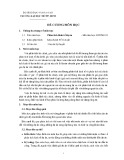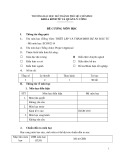
1
Copy right © 2007 by The McGraw-Hill Companies, Inc. All rights reserve d.
The Balance
Sheet and
Financial
Disclosures
3
3-2
Learning Objectives
Describe the purpose of the balance sheet and
understand its usefulness and limitations.
3-3
The Balance Sheet
Limitations:
pThe balance sheet does not
portray the market value of
the entity as a going concern
nor its liquidation value.
pResources such as
employee skills and
reputation are not recorded
in the balance sheet.
Usefulness:
pThe balance sheet describes
many of the resources a
company has available for
generating future cash flows.
pIt provides liquidity
information useful in
assessing a company’s
ability to pay its current
obligations.
pIt provides long-term
solvency information relating
to the riskiness of a
company with regard to the
amount of liabilities in its
capital structure.
The purpose of the balance sheet is to report a
company’s financial position on a particular date.






























